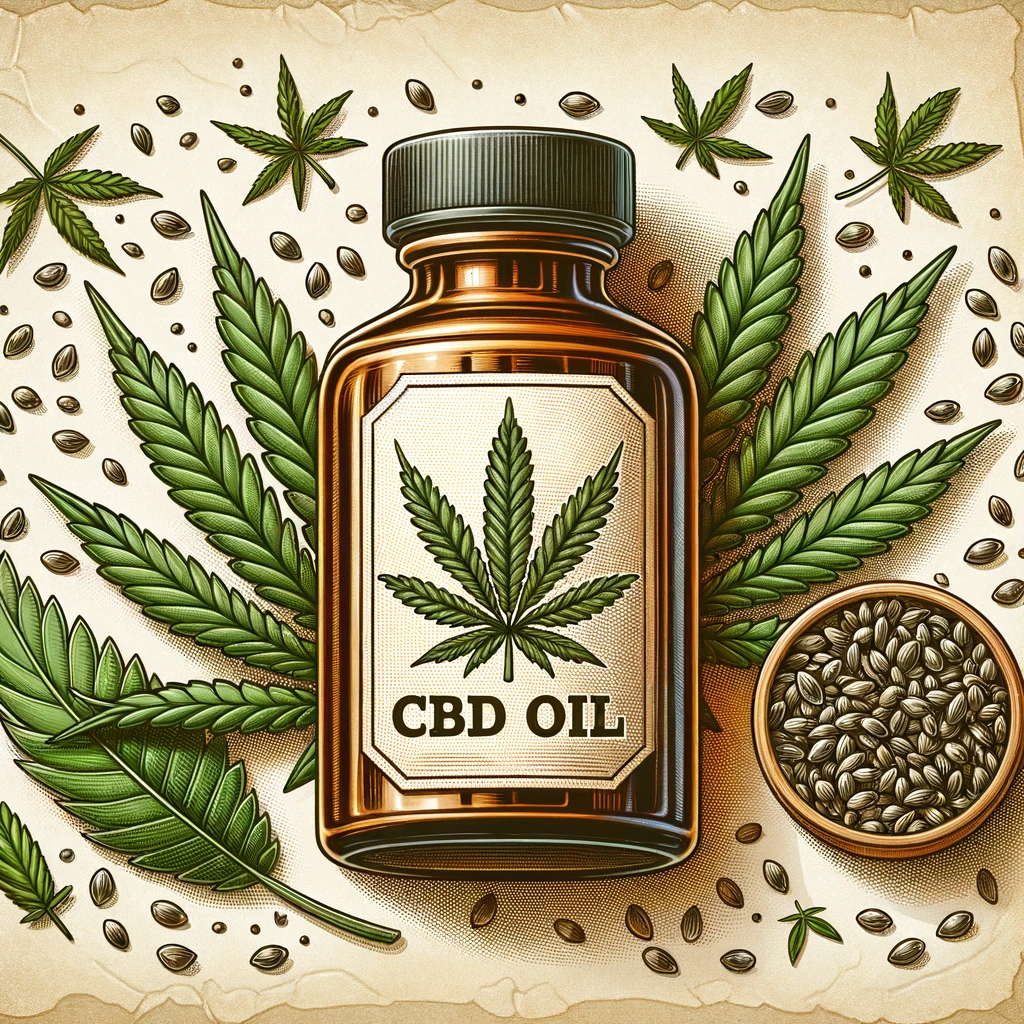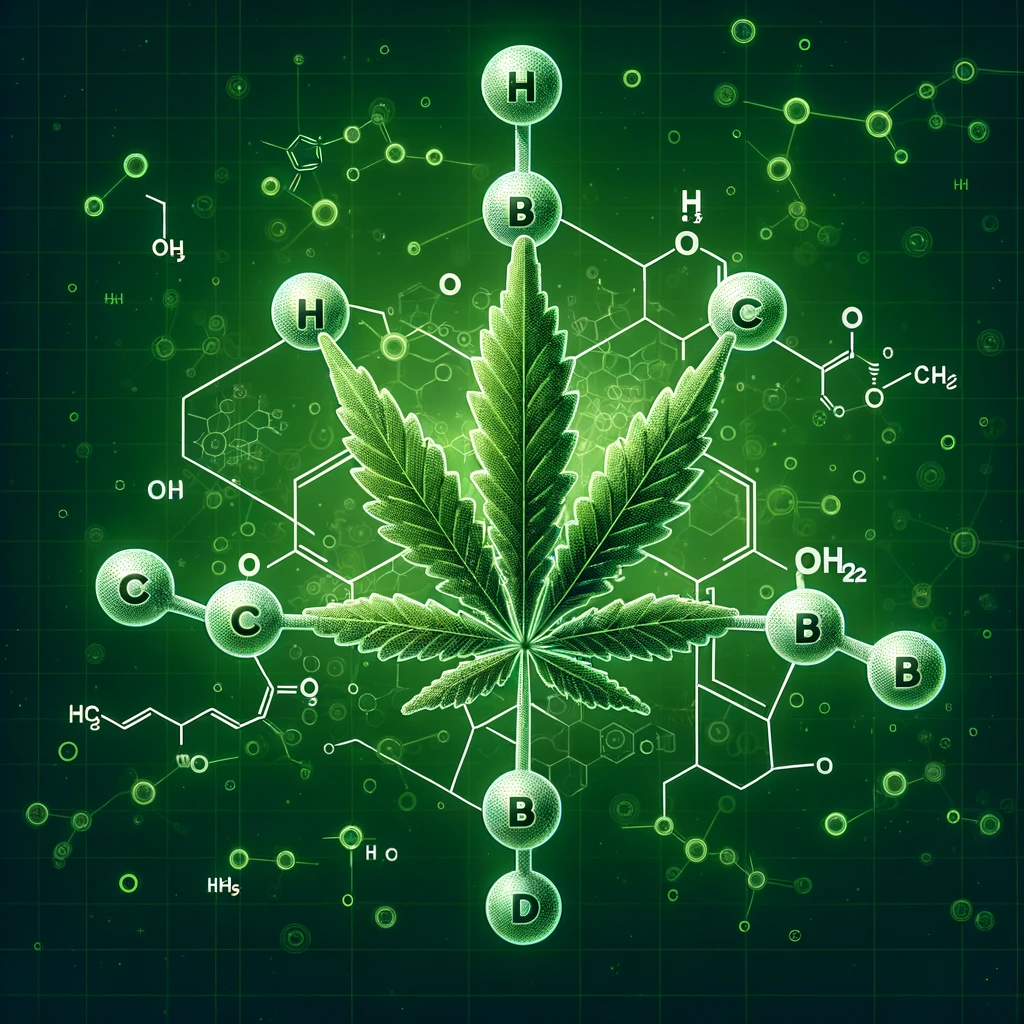Introduction
In the realm of cannabis and its derivatives, the most widely discussed cannabinoids are undoubtedly cannabidiol (CBD) and tetrahydrocannabinol (THC). Despite stemming from the same plant species, these two compounds have distinctly different effects and uses, which has sparked significant interest from medical researchers, healthcare providers, and consumers alike. As the legal landscape continues to evolve and the demand for cannabis-based products rises, distinguishing between CBD and THC becomes increasingly crucial.
Chemical Structure and the Endocannabinoid System
CBD and THC have the same molecular structure: 21 carbon atoms, 30 hydrogen atoms, and 2 oxygen atoms. However, a slight difference in how the atoms are arranged accounts for the differing effects on the body. Both cannabinoids interact with the body’s endocannabinoid system (ECS), which regulates various functions such as sleep, mood, appetite, memory, and reproduction. THC binds with the cannabinoid 1 (CB1) receptors in the brain, which results in the psychoactive effects of feeling ‘high.’ In contrast, CBD binds weakly, if at all, to CB1 receptors. In fact, it can interfere with the binding of THC and dampen its psychoactive effects.
Psychoactive Components and Legal Status
THC is best known for its psychoactive properties, which is the primary distinction from CBD. It is THC that is responsible for the euphoria or high associated with cannabis use. CBD, on the other hand, is non-psychoactive and does not result in a high. This fundamental difference influences the legal status of the two substances. In many regions around the world, THC is still classified as an illegal substance, whereas CBD is more widely accepted and legal, particularly if it is derived from hemp, which contains no more than 0.3% THC content.
Medical Benefits and Side Effects

Both CBD and THC have a number of similar medical benefits. They can provide relief from several of the same conditions. However, CBD doesn’t produce the euphoric effects that occur with THC. Some people may prefer to use CBD because of the lack of this side effect.
CBD is used to help with various conditions such as:
- Inflammation
- Pain
- Migraines
- Depression
- Anxiety
- Seizures
- Psychosis
THC is used to help with conditions such as:

- Pain
- Muscle spasticity
- Glaucoma
- Insomnia
- Low appetite
- Nausea
- Anxiety
It’s important to note that both cannabinoids can cause side effects. CBD is generally well-tolerated, but it can cause reactions in some people, such as dry mouth, diarrhea, reduced appetite, drowsiness, and fatigue. THC can cause temporary side effects such as increased heart rate, coordination problems, dry mouth, red eyes, slower reaction times, memory loss, and anxiety.
Potential Risks and Drug Testing
The side effects of THC are also relevant when considering potential risks. High doses of THC can lead to long-term negative psychiatric effects. This is especially true for adolescents who consume large amounts of THC, although there’s no conclusive evidence that using cannabis causes psychiatric disorders like schizophrenia.
Drug testing is another consideration. THC is the main psychoactive component in marijuana that drug tests typically screen for. However, some tests may detect CBD as well. Since various CBD products can contain trace amounts of THC, this can potentially result in a positive drug test.
Legal Implications and Availability
The legality of cannabis products varies by state and country. In the U.S., cannabis-related laws are evolving regularly. Many states have legalized THC for medical use, and some have legalized it for recreational use as well. THC and marijuana are still prohibited under U.S. federal law. CBD, if derived from hemp, has been removed from the Controlled Substances Act, making it legal under federal law; however, it can still be regulated by individual states.
Forms, Dosage, and Consumption Methods
CBD and THC are available in various forms, which determines how they are used or consumed. Common forms of CBD include oils, tinctures, gummies, supplements, and topicals. THC is often consumed through marijuana smoking, but it’s also available in oils, edibles, tinctures, capsules, and more.
The appropriate dosage for either compound varies based on the individual’s body chemistry, the potency of the product, and the reason for use. It’s advisable to start with a low dose and gradually increase it until the desired effect is reached.
Research and Developments
The body of research on CBD and THC is expanding. Although there is much to learn about these compounds, CBD has become particularly interesting to researchers due to its potential therapeutic effects without the psychoactive impact. Ongoing studies are examining the possible uses of CBD for various conditions, including anxiety, multiple sclerosis, Parkinson’s disease, and cancer.
The Future of Cannabinoid Use in Therapy
The therapeutic landscape is seeing a paradigm shift with cannabinoids being given serious consideration in the treatment of chronic conditions, as well as mental health disorders. With CBD already being an active ingredient in an FDA-approved drug for epilepsy, the medical community is increasingly receptive to the potential benefits of cannabinoids.
Education and Awareness
The need for education and awareness around CBD and THC cannot be overstated. Consumers need accurate information to make informed decisions regarding their health and wellness. This includes understanding how each compound works within the body, the potential benefits, the risks, and the legal framework that governs their use.
Challenges and Considerations
Despite the therapeutic promise, the use of CBD and THC is not without challenges. Dosage standardization, quality control, and the complex legalities of cannabis-derived substances remain significant hurdles. Furthermore, because the cannabis market is flooded with an array of products with varying degrees of quality, consumers must navigate this landscape with a discerning eye, often relying on third-party lab results to verify the contents of the products they consume.
Interactions with Conventional Treatments
One area that requires more research is the interaction of CBD and THC with conventional treatments. While there is some evidence that CBD may enhance the efficacy of certain drugs or mitigate side effects, it can also interfere with how drugs are metabolized by the liver. This underscores the importance of consulting healthcare professionals before starting any cannabinoid-based treatment, especially for individuals who are already on other medications.
Global Legal Reform
The global legal reform on cannabis is indicative of the shifting perceptions towards CBD and THC. As more countries adopt progressive policies that distinguish between the intoxicating effects of THC and the non-intoxicating, potentially therapeutic effects of CBD, the market is expected to expand, providing more access and options for patients and consumers.
The Economics of Cannabinoids
The economic implications of the burgeoning cannabinoid industry are substantial. With the increasing demand for CBD products for health and wellness purposes and the growing legalization of THC for medical and recreational use, the financial landscape of the cannabis industry is rapidly evolving. This presents opportunities and challenges, from ensuring the ethical production and distribution of these compounds to navigating the complexities of international trade in these products.
Conclusion
The conversation around CBD and THC is multi-faceted, encompassing scientific, legal, and societal dimensions. CBD, known for its wide range of potential health benefits without the intoxicating effects, has become a cornerstone of the wellness industry. THC, while still facing stigma due to its psychoactive properties, is recognized for its own therapeutic potential and recreational value. As research advances and public perception continues to shift, the nuanced understanding of both CBD and THC paves the way for a future where the full potential of these compounds can be realized, leveraged, and effectively integrated into both clinical practice and daily life.
In essence, CBD and THC serve as two sides of the cannabis coin, offering a spectrum of benefits that reflect their complex nature. For patients, consumers, healthcare providers, and legislators, the journey towards fully unlocking the potential of these cannabinoids is ongoing. It is a path marked by discovery, education, and the continuous evolution of societal norms. What remains clear is that the future of CBD and THC is not only promising but poised to redefine therapeutic modalities in the years to come.
